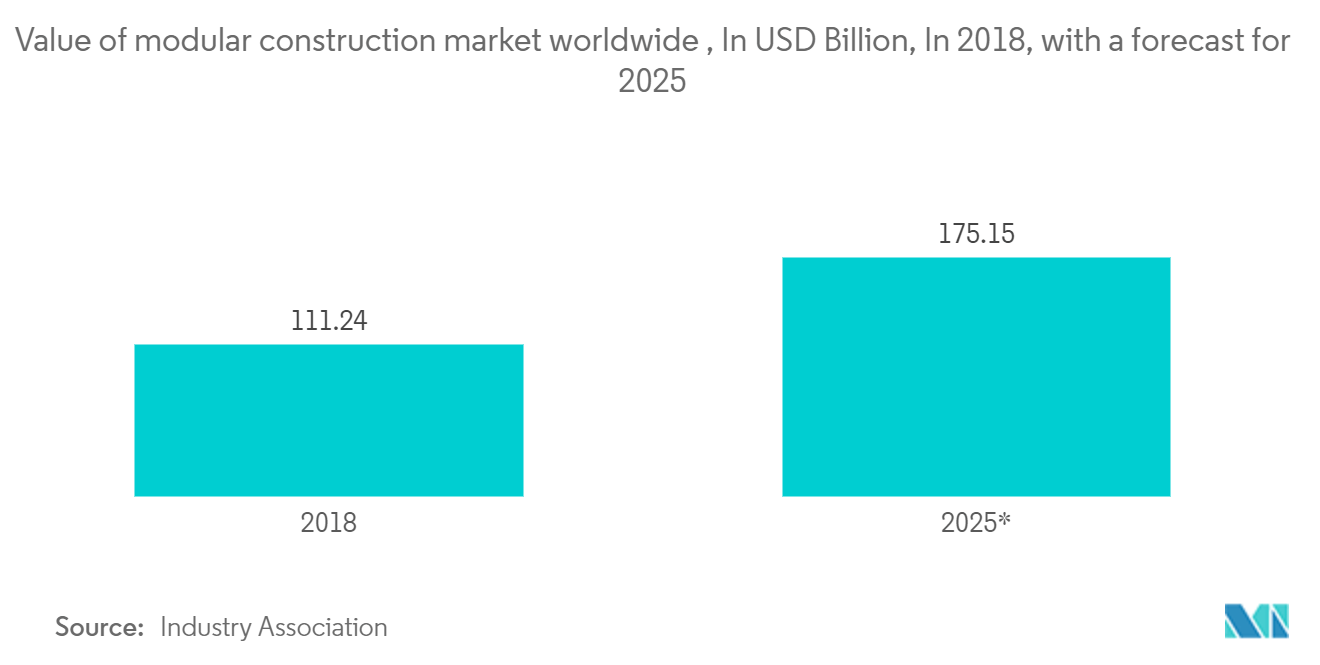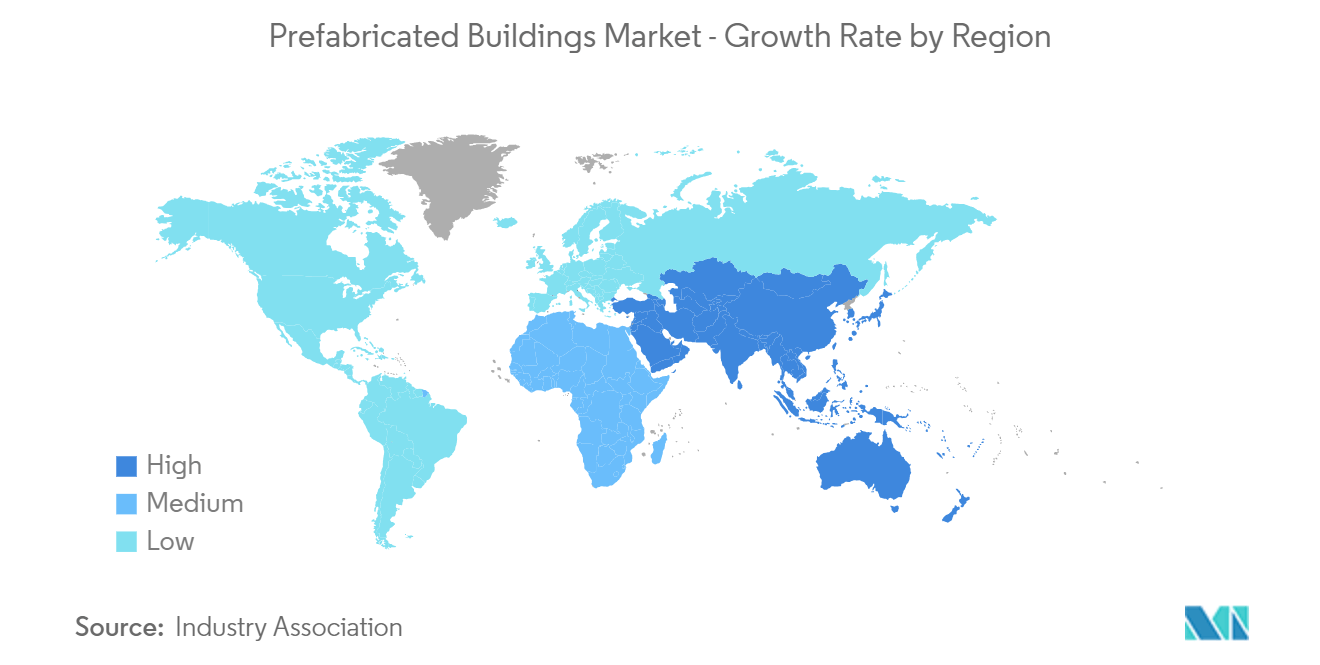Market Trends of Prefabricated Buildings Industry
Growing demand for Modular Construction
Due to rapid economic development in developing nations and historically low interest rates in many wealthy nations, there is a rising demand for construction. Along with this, the market is anticipated to rise throughout the forecast period due to factors like rising disposable income, technological advancements, and increased private-sector investments in construction. Additionally, greater spending on housing and infrastructure by governments around the world is boosting market expansion. Time and cost are two factors related to building operations that have long been viewed as a barrier to the industry's expansion in many emerging economies. Overcoming this restriction has been one of the main challenges for many significant building enterprises across the world. The prefabricated building system is one of the primary remedies for these issues.
Prefabricated building technologies can reduce construction time by 30 to 50 percent in today's market and provide an alternative. Since fewer workers are needed for the on-site procedures, the system is economical. Another unintended consequence of the process is reduced on-site activity is the significantly smaller amount of garbage that is generated. Because of these benefits, prefabricated building system activities are growing in popularity in the construction sector.
In nations like Singapore and India, where governments are investing extensively in boosting the building and construction sector, business is booming. The Australian Trade and Investment Commission estimates that Singapore spends at least USD 2 billion a month on public infrastructure. Additionally, the Dutch construction industry is growing thanks to the government's program for a circular economy, which aims to create a circular economy in the country by 2050. Furthermore, due to different government efforts like Foreign Direct Investments, the building and construction industries are also expanding.
Prefabricated building systems are widely employed in the construction of both residential and non-residential structures because they have several advantages, including being environmentally friendly and flexible, causing less site disruption, and cost savings. Therefore, it is anticipated that demand for prefabricated building systems like ventilated thermal panels will expand significantly as construction activity increases globally. As a result, such government initiatives and investments in the building sector serve as a market driver.

Asia-Pacific is Projected to Witness Highest Growth in the Market
The Asia-Pacific prefabricated buildings market is estimated to witness the highest growth over the next five years. The prefabricated construction market in Japan is comparatively mature and developed compared to other regions of the world.
The demand for cheap housing is one of the main factors driving the market. Prefabricated houses can be a practical answer to the issue of a lack of cheap housing in several Asian and Pacific Island nations. Prefabricated structures can be built more rapidly and are typically less expensive than traditional buildings, which can help bring down the cost of construction.
The growth in construction activity is another significant aspect influencing the industry. Recent years have seen significant urbanization in the Asia Pacific region, which has increased construction activity. Residential, commercial, and industrial development projects can all benefit from the utilization of prefabricated buildings.
The inspections by industry-specific trained professionals rather than a general building code have also contributed to the development of the Japanese prefabricated housing market. The concept of prefabrication is gaining prominence in the Indian construction market.
The entry of prefabricated homes in India has paved the way for innovative and technologically advanced construction and design methods for all kinds of construction, such as villas and mass townships.
With the population continuing to decline in Japan combined with an aging population, it is undeniable that the demand for new house construction also decreases. The companies are looking to capture the potential growth in China and other Asian countries as demand for new construction declines in the shrinking domestic market.

